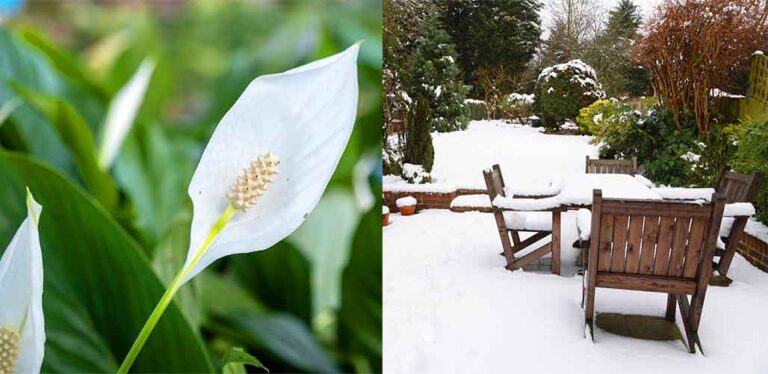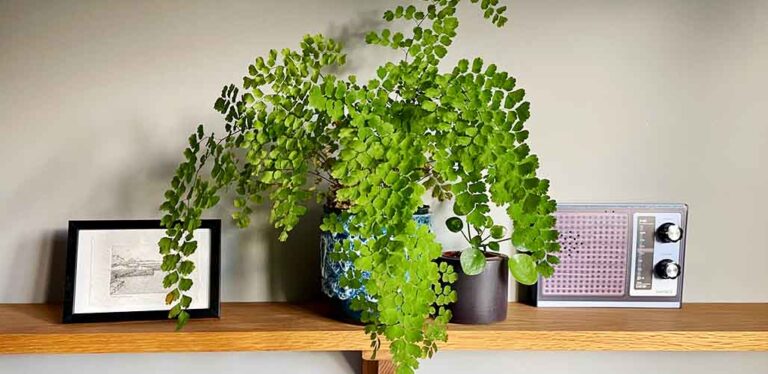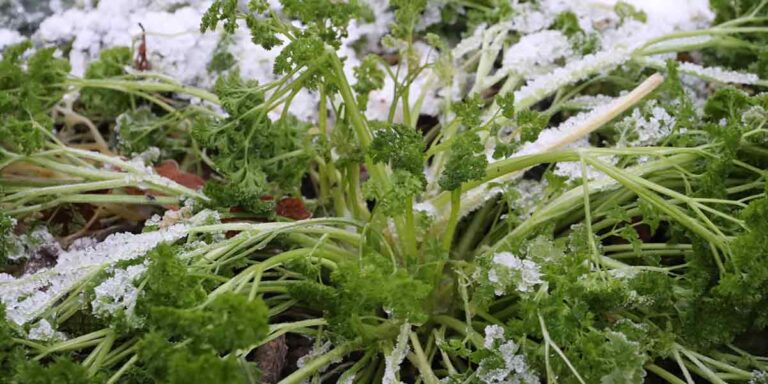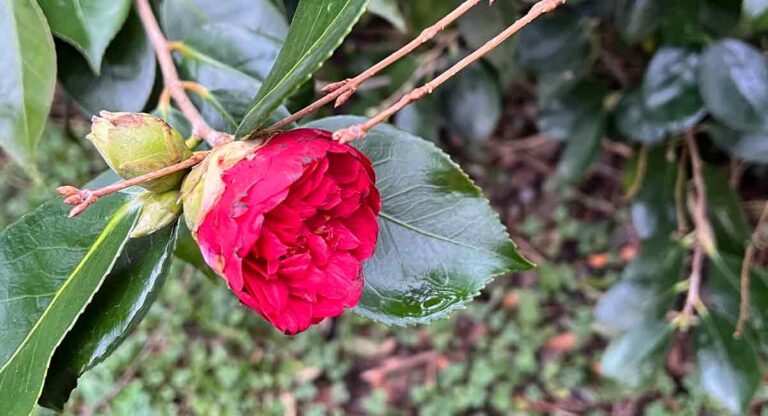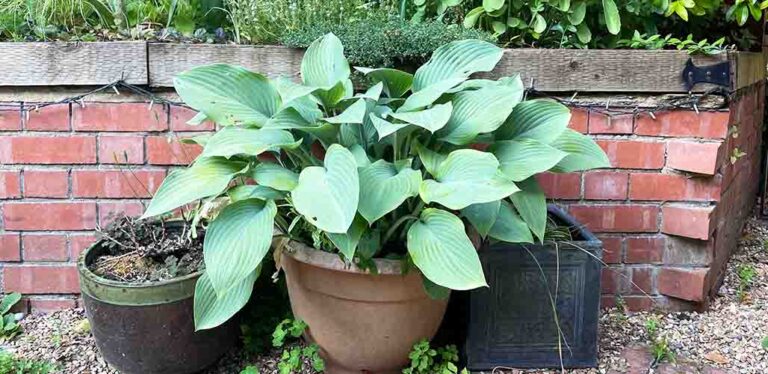Begonia Cold Tolerance – A Gardener’s Guide
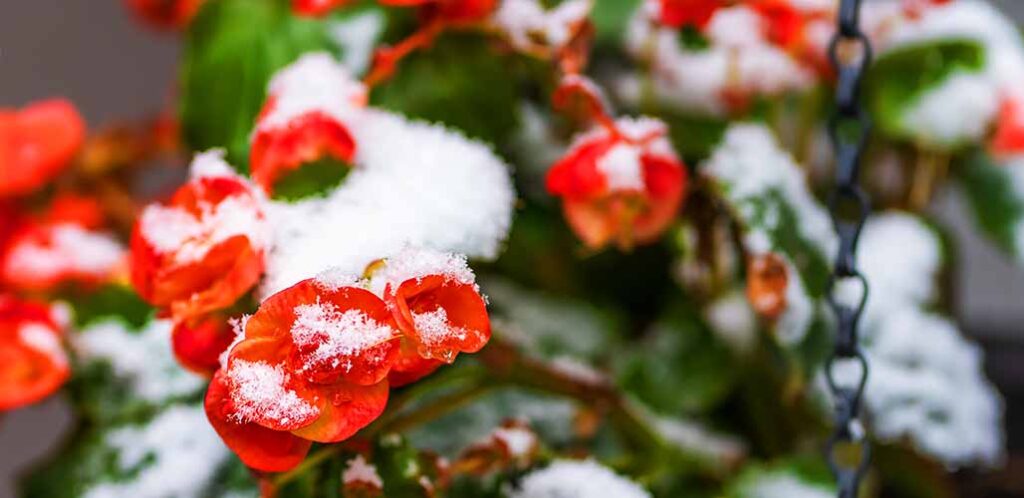
When I moved into my house, the garden was already stocked with several types of begonia. Which at the time I could only identify by using an app on my phone. The following spring, some of the begonias came back, but others just left empty spaces behind them in the soil. Since then, I’ve learned a lot more about begonia cold tolerance. Including why some of them survived the winter and others didn’t. I’ve also learned a thing or two about boosting begonias’ chances of coping with freezing weather.
Contents
- Begonia cold tolerance
- How the different types of begonia compare
- 5 cold tolerant varieties to try
- How to protect you begonias in winter
Are begonias cold tolerant?
Begonias aren’t just one species of plant. They are a whole family of plants, comprising over 2,000 species! Most of them were originally native to tropical and subtropical forests in Africa, Central America and Southern Asia. Which means they are adapted to warm, sheltered, and humid conditions. These species inevitably have limited cold tolerance, because it just isn’t something they needed in order to survive. However, some species do come from colder regions – particularly in China and Japan – where they need to endure freezing winter temperatures in between growing seasons. These species have much higher cold tolerance.
These days, it’s a smart idea to consider cold tolerance before planting begonias in your garden. If you want to enjoy tropical species of begonia year after year, you’ll either need to replace them every spring, or invest in protecting them over winter somehow. But if you prefer a more ‘plant and go’ low maintenance style of gardening, you’ll be better off choosing a hardy begonia.
How the different types of begonia compare
There are several ways in which you could divide the many species of begonia into groups. Here are most commonly used categories in order of cold tolerance.
- Hardy
- Tuberous
- Rhizomatous
- Wax
- Foliage
Now let’s have a closer look at how each of these types copes with winter chills!
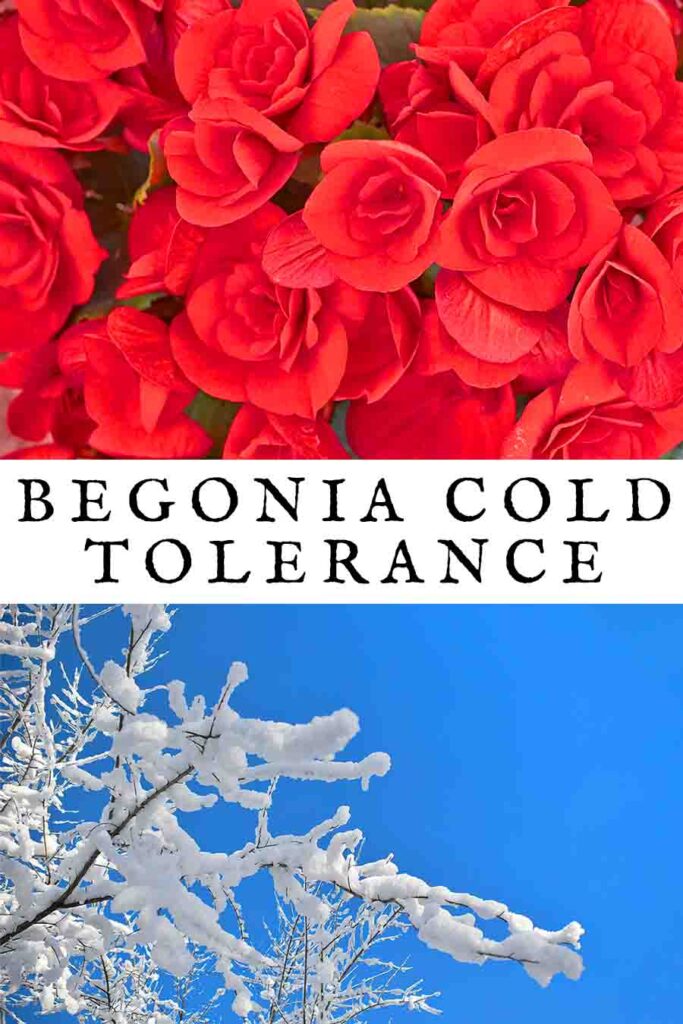
Hardy begonias
Hardy begonias, or Begonia grandis are native to central and southern China. These are temperate regions, which are cooler than the tropical and subtropical locations that most begonias come from. They are actually a type of tuberous begonia, like the species in the category below. They originally adapted to survive in places with cold winters. So the tubers don’t need lifting out of the ground and storing indoors over winter. They can be left in your flower beds, where they will die back to soil level after the first frosts, and regrow in spring. The dormant tubers can withstand winter temperatures as low as 0°F, and sometimes even -10°F with a little protection. This makes them the most cold hardy of all begonias.
Tuberous begonias
Tuberous begonias are so called because they grow from tubers, which look a bit like flat (or even slightly concave) hairy bulbs. In winter, all their flowers and foliage die right back, and the tubers go into a state of dormancy until the soil temperatures rise again in spring. However, the tubers will also start to die off in temperatures below the region of 0-10°F. They’re also prone to rotting in heavy or waterlogged soils. This means they’re cold hardy in some regions (like the west and southern states of North America), but not others (like the Midwest and Northeast).
In places where tuberous begonias aren’t reliably cold tolerant, most gardeners lift them out of the soil at the beginning of winter. After the most severe winter weather has passed, they can be brought back to life in pots, then transplanted into the flowerbed again.
Rhizomatous begonias
Unlike tuberous begonia which grow from tubers, rhizomatous begonias produce rhizomes. These are long, modified stems which creep along the surface of the soil and put down new roots once they’re far enough away from the parent plant. They’re a large and diverse group of begonias, with a range of abilities to tolerate cold. The most cold tolerant varieties can withstand temperatures down to about 30°F. In other words, none of them will survive being frozen. But if you live in a consistently mild climate, they might still survive being left outside over winter. Some varieties go through a period of winter dormancy during which the leaves die back and only the rhizomes and roots go on living under the soil. Others keep their foliage all year round (more on those in a moment).
Wax begonias
Wax begonias are grown from seed, and form a fibrous root ball. Since they don’t have tubers or rhizomes to support a period of winter dormancy, they are among the least cold tolerant begonia varieties. In fact, they are usually grown as annual bedding plants and discarded at the end of the growing season. And these were the type that never grew back in my own garden). But, some people in very mild places report their wax begonias behaving more like short lived perennials, reflowering for 3 or 4 years before finally dying off.
Foliage begonias
Foliage begonias are basically a subcategory of rhizomatous begonias. But they are notable for keeping their foliage all year round, provided they are kept over 50°F (10°C) all year round. In other words, they don’t have a winter dormancy period. But, they are also the least cold tolerant group of begonias overall. Outside of their usual tropical habitat, they are, essentially, houseplants. But some people do keep them as hybrid indoor/outdoor plants by moving their pot outdoors in summer, and indoors again in winter.
5 cold tolerant begonia varieties to try
Here are 6 of the begonia species likely to be cold hardy in your region, or at least have the longest growing and flowering season before you need to lift them for winter:
- Begonia grandis ‘Evansiana’.One of two hardy begonias most commonly grown as ornamental garden plants. It grows up to 18 inches tall, and forms clumps up to 18 inches wide. It is a subtly fragrant and exotic looking addition to a sheltered, shady border. It is acclaimed by gardeners for being reliable, and pest resistant, and bees love it too!
- Begonia grandis ‘Evansiana alba’. The other hardy begonia most used by gardeners. Essentially identical to the one above, except that one produces pink flowers, and this one has white flowers. Both have been reported to tolerate winter temperatures as low as -10°F.
- Begonia ‘Barbara Rogers’. An exception to the rule that wax begonias can’t tolerate cold, and exceptional in just about every other respect too! This species grows to a whopping 2.5 feet high, and forms clumps up to 3 feet wide. It is cold hardy down to around 0°F, which means it also flowers for up to 26 weeks a year!
- Begonia ‘Metallic Mist’. Magic Mist is a cold hardy variety of rhizomatous begonia. It heralds from mountain regions of China, and is reported by growers to be reliable in winter temperatures as low as 0°F, and possibly even lower. It has pale pink flowers, but they are outshone by it’s striking blue-green foliage.
- Begonia emeiensis. Another rhizomatous variety, which is hardy down to about 12°F. It grows up to 18 inches tall and produces larger flowers than the other hardy varieties. The leaves are heart shaped leaves with serrated edges and the flowers are pink.
How to protect your begonias in winter
All types of begonia can benefit from a bit of protection in winter, but some need it more than others. Here are our top tips to make sure they come back in spring:
- Hardy begonias will come back to life earlier in spring if you grow them against a south facing wall, and mulch them in fall.
- Lift other tuberous begonias when the foliage dies back, and store the tubers in just-damp sand, in a frost free shed or greenhouse. In spring, discard any that have shriveled up, and plant the rest in individual 3 inch pots to bring them back to life, then transplant to the garden.
- Alternatively, grow tuberous begonias in pots, and move the whole pot somewhere sheltered over winter.
- Grow rhizomatous begonias in containers, and move them to a heated greenhouse or cool sun room over winter.
Begonia cold tolerance – summary
Begonias are a hugely diverse plant family, and their cold tolerance varies by species, according to where they are native to. Hardy species from cool temperate zones are more cold tolerant than wax begonias from tropical rainforests, for example. If you’d like more begonias in your garden, you can choose a cold hardy variety that stays in the ground all year round, or choose a more tender variety and give it suitable protection in winter.
Tell us which begonias survive winter in your garden using the comments box down below!

